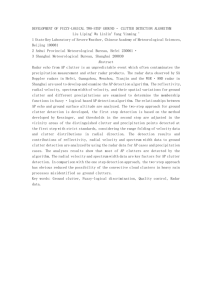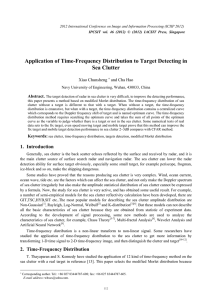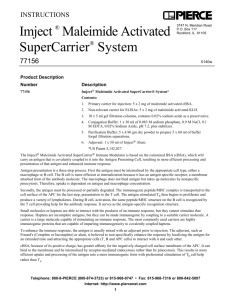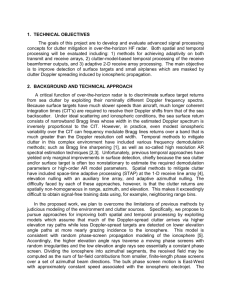Biology-Based Matched Signal Processing and Physics
advertisement
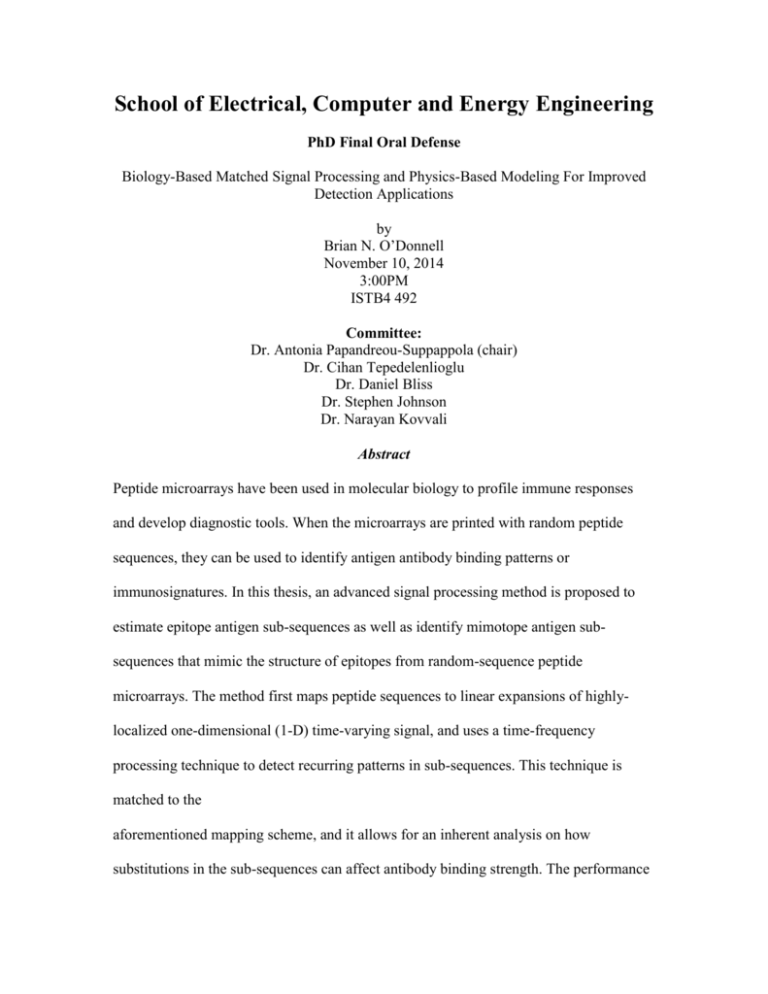
School of Electrical, Computer and Energy Engineering PhD Final Oral Defense Biology-Based Matched Signal Processing and Physics-Based Modeling For Improved Detection Applications by Brian N. O’Donnell November 10, 2014 3:00PM ISTB4 492 Committee: Dr. Antonia Papandreou-Suppappola (chair) Dr. Cihan Tepedelenlioglu Dr. Daniel Bliss Dr. Stephen Johnson Dr. Narayan Kovvali Abstract Peptide microarrays have been used in molecular biology to profile immune responses and develop diagnostic tools. When the microarrays are printed with random peptide sequences, they can be used to identify antigen antibody binding patterns or immunosignatures. In this thesis, an advanced signal processing method is proposed to estimate epitope antigen sub-sequences as well as identify mimotope antigen subsequences that mimic the structure of epitopes from random-sequence peptide microarrays. The method first maps peptide sequences to linear expansions of highlylocalized one-dimensional (1-D) time-varying signal, and uses a time-frequency processing technique to detect recurring patterns in sub-sequences. This technique is matched to the aforementioned mapping scheme, and it allows for an inherent analysis on how substitutions in the sub-sequences can affect antibody binding strength. The performance of the proposed method is demonstrated by estimating epitopes and identifying potential mimotopes for eight monoclonal antibody samples. The proposed mapping is generalized to express information on a protein's sequence location, structure and function onto a highly localized 3-D Gaussian waveform. In particular, as analysis of protein homology has shown that incorporating different kinds of information into an alignment process can yield more robust alignment algorithms, a pairwise protein structure alignment method is proposed based on a joint similarity measure of multiple mapped protein attributes. The 3-D mapping allocates protein properties into distinct regions in the time-frequency plane in order to simplify the alignment process by including all relevant information into a single, highly customizable waveform. Simulations demonstrate the improved performance of the joint alignment approach to infer relationships between proteins, and provide information on mutations that cause changes to both the sequence and structure of a protein. In addition to the biology-based signal processing methods, a statistical method is considered that uses a physics-based model to improve processing performance. In particular, an externally developed physics-based model for sea clutter is examined when detecting a low radar cross-section target in heavy sea clutter. This novel model includes a process that generates random dynamic sea clutter based on the governing physics of water gravity and capillary waves and a finite-difference time-domain electromagnetics simulations process based on Maxwell's equations propagating the radar signal. A subspace clutter suppression detector is applied to remove dominant clutter eigenmodes, and its improved performance over matched filtering is demonstrated using simulations.






